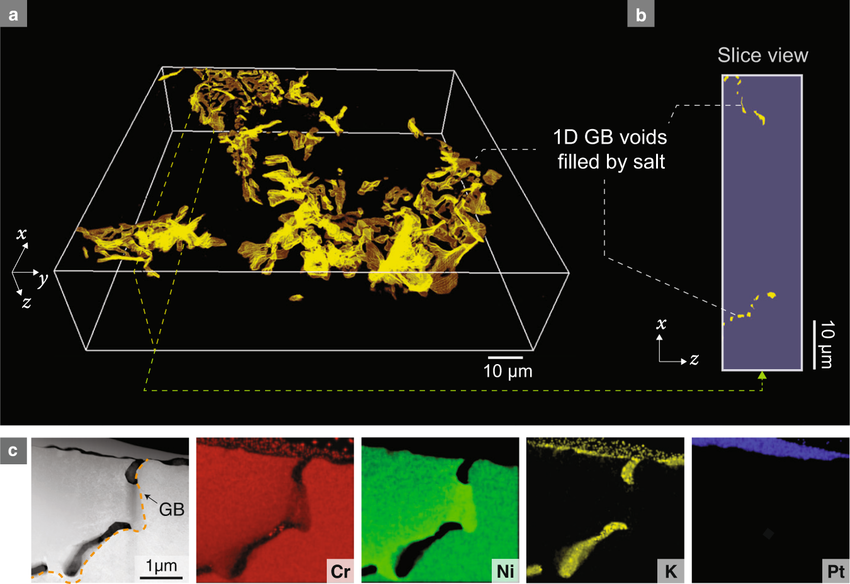What is 1D Wormhole Corrosion?
Scientists have recently discovered a new form of corrosion known as the 1D wormhole corrosion. This type of corrosion is characterized by a wormhole-like 1D morphology that can serve as a mass-flow pathway. The discovery of this type of corrosion is significant for the understanding of material degradation mechanisms in molten salt environments, particularly in relation to next-generation nuclear power plants that use molten salts as coolants.
What is 1D Wormhole Corrosion?
The 1D wormhole corrosion is a highly localized form of penetrating corrosion that occurs in a nickel-chromium alloy when exposed to molten fluoride salt. This type of corrosion leads to the development of a percolating network of tunnels along grain boundaries. These tunnels are filled with molten salt and leave voids along the grain boundaries. The 1D wormhole corrosion is characterized by a wormhole-like 1D morphology that can serve as a mass-flow pathway.
Implications for Material Degradation Mechanisms in Molten Salt Environments
The discovery of the 1D wormhole corrosion has important implications for the understanding of material degradation mechanisms in molten salt environments. Molten salts are a key candidate for coolants in next-generation nuclear power plants. These power plants are being designed to be safer, more efficient, and more sustainable than current nuclear power plants. The use of molten salts as coolants is particularly attractive because they have a high thermal conductivity and a high boiling point. This makes them ideal for transferring heat away from the reactor core and for generating electricity.
However, the use of molten salts as coolants can lead to material degradation mechanisms, such as corrosion. The discovery of the 1D wormhole corrosion provides new insights into the types of corrosion that can occur in molten salt environments. This can help scientists and engineers to design materials that are more resistant to corrosion in these environments.
Significance for Next-Generation Nuclear Power Plants
The discovery of the 1D wormhole corrosion is significant for the ongoing efforts to design next-generation nuclear power plants. These power plants are being designed to use molten salts as coolants, and the discovery of this type of corrosion highlights the need for materials that are more resistant to corrosion in molten salt environments. The use of materials that are resistant to corrosion is essential for ensuring the safety and reliability of next-generation nuclear power plants.
In addition, the discovery of the 1D wormhole corrosion can help scientists and engineers to design better monitoring and maintenance systems for these power plants. By understanding the types of corrosion that can occur in molten salt environments, scientists and engineers can develop better methods for detecting and repairing corrosion damage.
Category: Science & Technology Current Affairs


